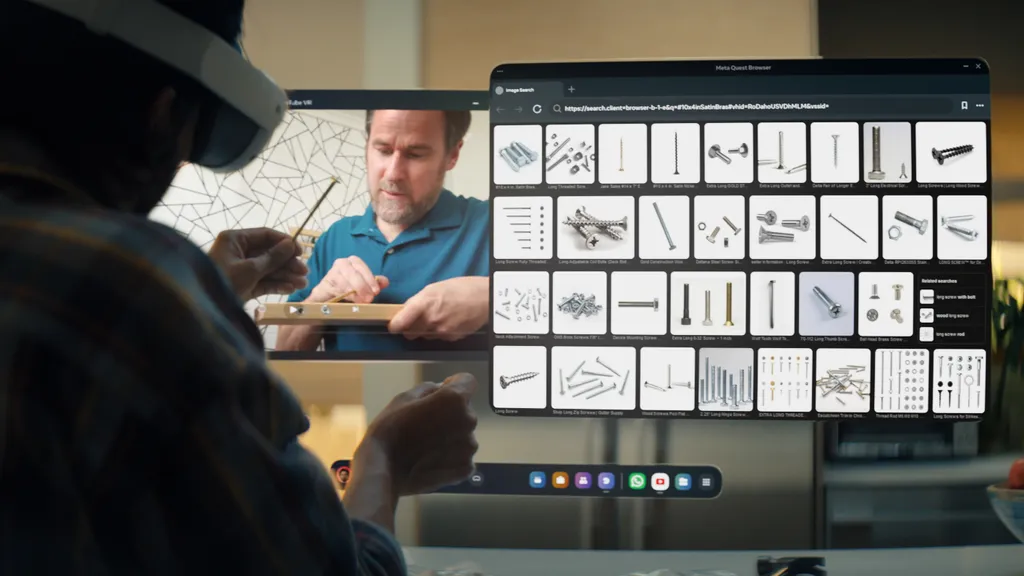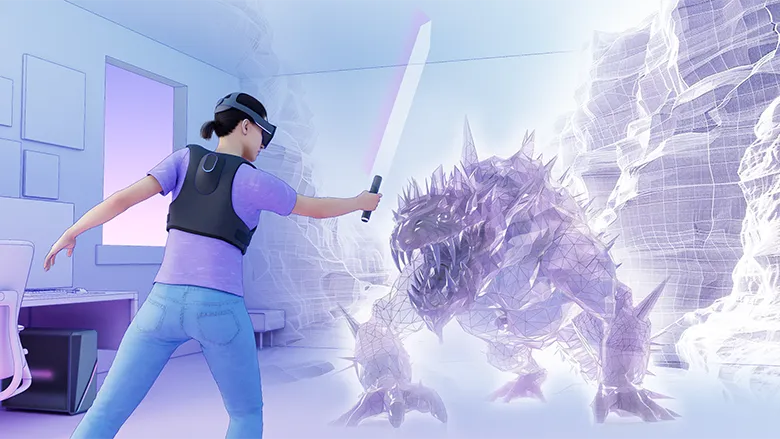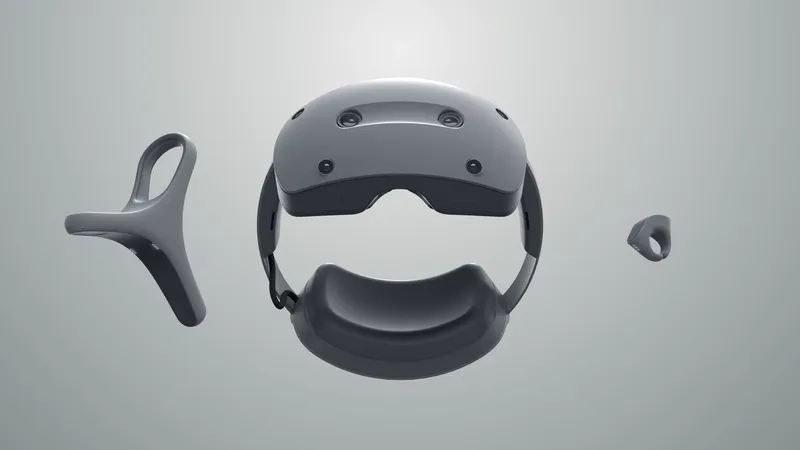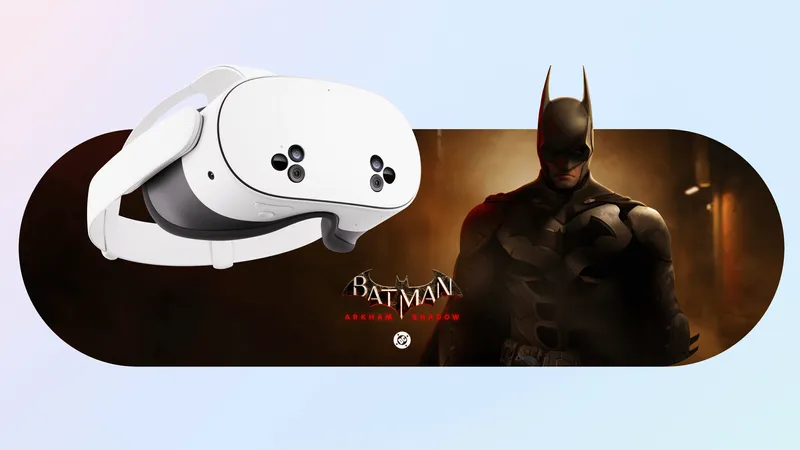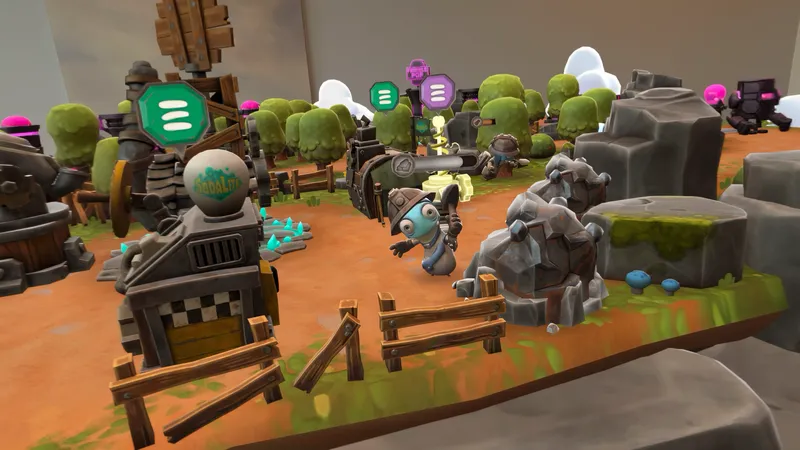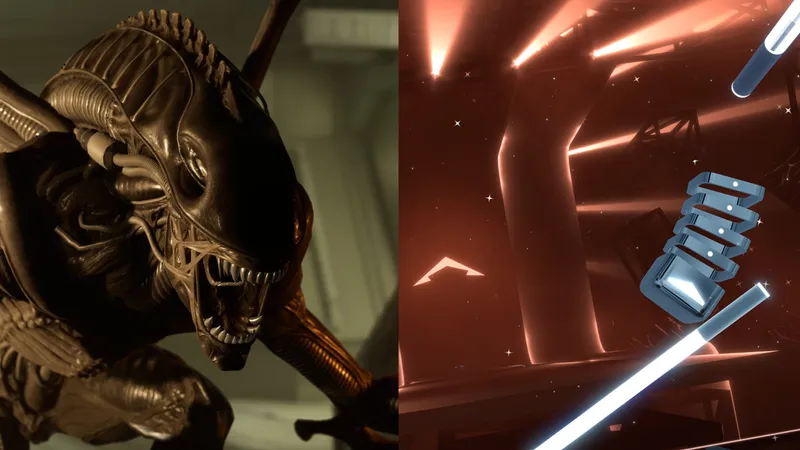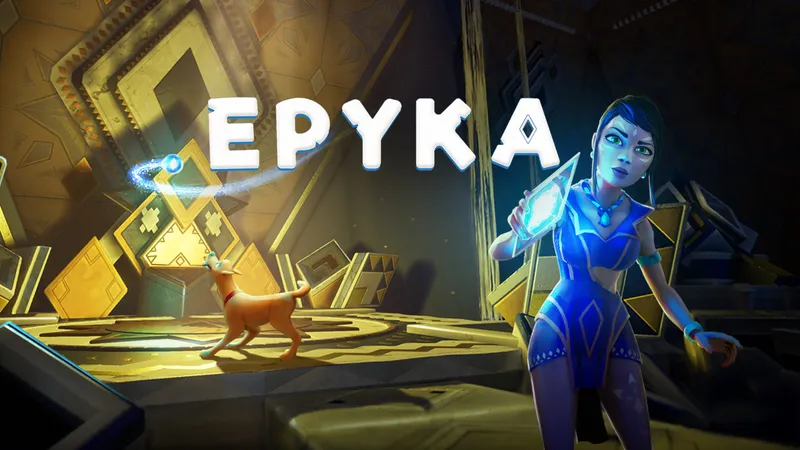The Quest v67 update lets you freely position 2D windows, improves Quest Pro's eye tracking, lets Quest 3 scan Wi-Fi QR Codes, and more.
Quest v67 will "roll out" gradually starting on Monday, after which it may take a few days or even weeks for your headset to get it.
New Window Layout
Normally the Quest system interface supports up to three visible windows at once and has separate 'modes' you switch between, Close View and Far View.
In Close View windows can't be resized and the side windows are attached to the middle app and not angled towards you, meaning viewability is awkward unless you physically strafe to the side. In Far View windows can be resized, but not individually repositioned.
In Close View you can only reposition the entire interface, including the attached windows, while in Far View you can reposition all the windows together separately from the interface, but you still can't individually reposition windows without moving the whole interface.
Clip from Meta.
Version 67 adds a new experimental option called New Window Layout.
New Window Layout gets rid of the explicit modes and instead lets you grab and detach windows to position and resize them freely. For the attached side windows, it also angles them slightly toward you to significantly improve viewability.
You can detach up to three windows, meaning you can now have a total of six 2D windows running at once, three docked and three detached.
New Window Layout also adds the new ability to take any window fullscreen, which makes it much larger and temporarily hides the dock and other windows. In the dock's place is a simplified control bar that lets you toggle curving, switch the background between passthrough and a virtual environment, and adjust the brightness of said background.
Quest Pro Eye Tracking Improved
Quest Pro was the first consumer standalone VR headset to ship with integrated eye tracking, and remains the only shipped Oculus or Meta headset with eye tracking.
Eye Tracked Foveated Rendering on Quest Pro
In the v55 update just over a year ago, eight months after Quest Pro shipped, Meta said it improved Quest Pro's eye tracking "to make it more accurate across a broader field of view and during expressions like winking".
Now, in v67, Meta says it has "made further improvements", though isn't specifying exactly what these are. The company recommends recalibrating eye tracking to see the new benefits.
Quest 3 Wi-Fi QR Code Scanning
Many devices nowadays support generating a QR code that can be used to join the Wi-Fi network they're currently connecting to, and some venues have these codes printed out for use. The QR code contains the network SSID and password.
Quest 3 now supports scanning these QR codes using its passthrough cameras to join networks, a convenient addition given how text entry in XR headsets is still burdensome.
To join a network via QR code, go to the Wi-Fi section of settings.
Swipe Typing No Longer Experimental
Swipe typing has been an experimental option on Quest since v56, which released around a year ago. With v67 it's no longer experimental.
Quest v55 footage from VR enthusiast Luna.
If you're unfamiliar, swipe typing is an input method available on smartphones where you "draw" a continuous line between letters on the keyboard, and some people find it allows faster typing than individually pressing keys.
Do Not Disturb Timer
With v67, you can now turn on Do Not Disturb for a specific duration of time, muting notifications so you can focus on work or enjoy an immersive experience in peace.
Immersive Media Continuity
With v67, Meta says you can now "open Quest TV or use File Viewer to watch immersive videos" without quitting the running VR or mixed reality app.
Creator Content in Horizon Feed
Meta says you'll soon start to see videos from content creators in Horizon Feed, the default interface you see when loading up a Quest headset.
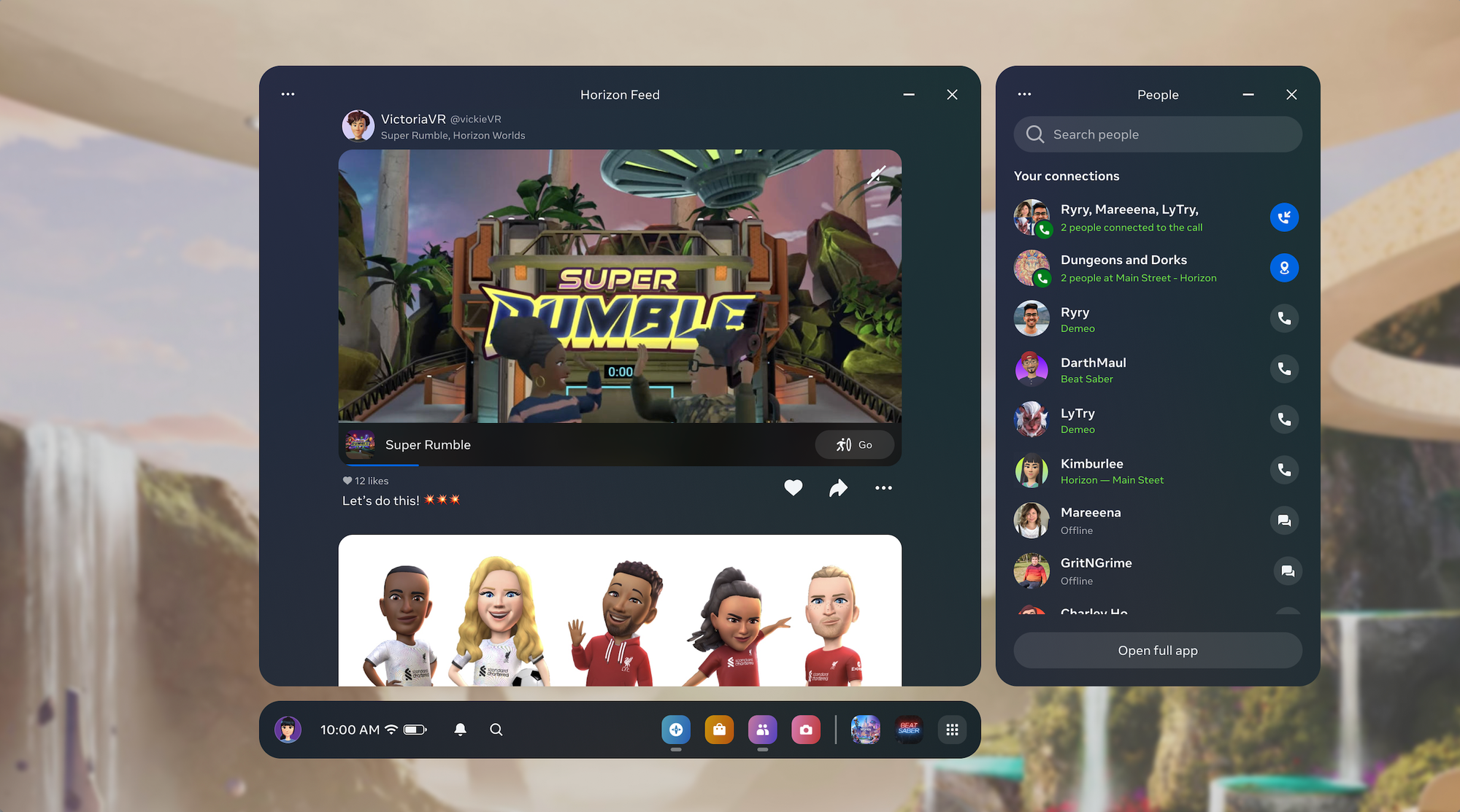
Meta says interested content creators can enroll to be included on the Meta Quest Community Discord.

